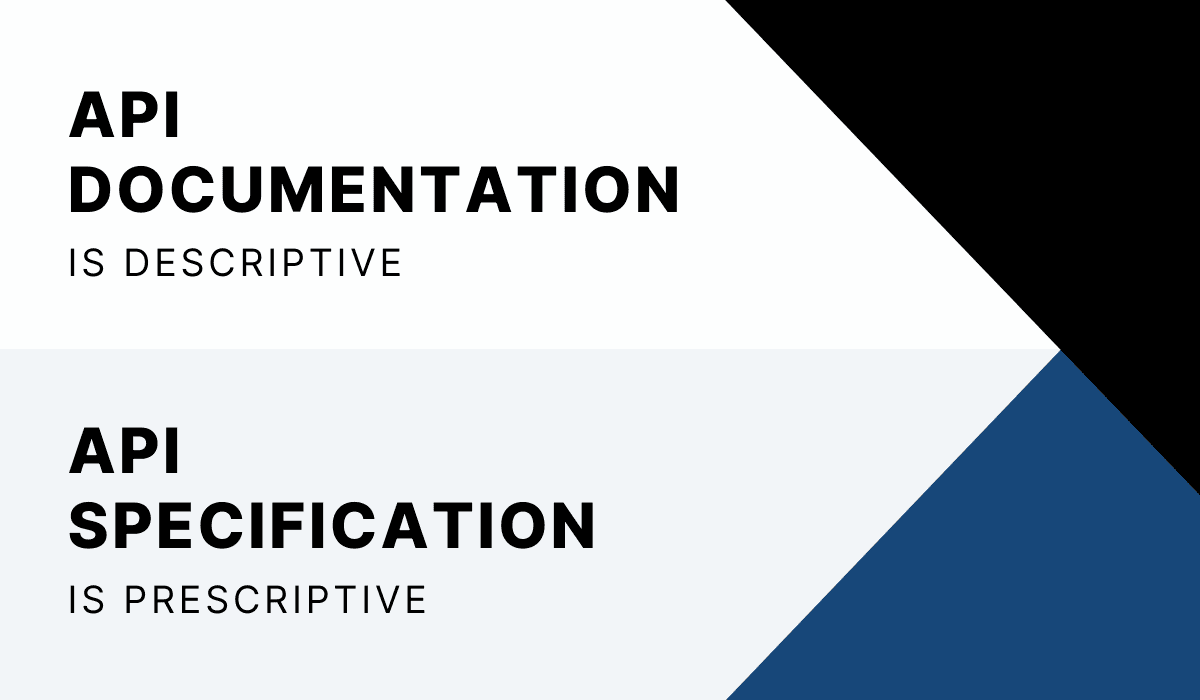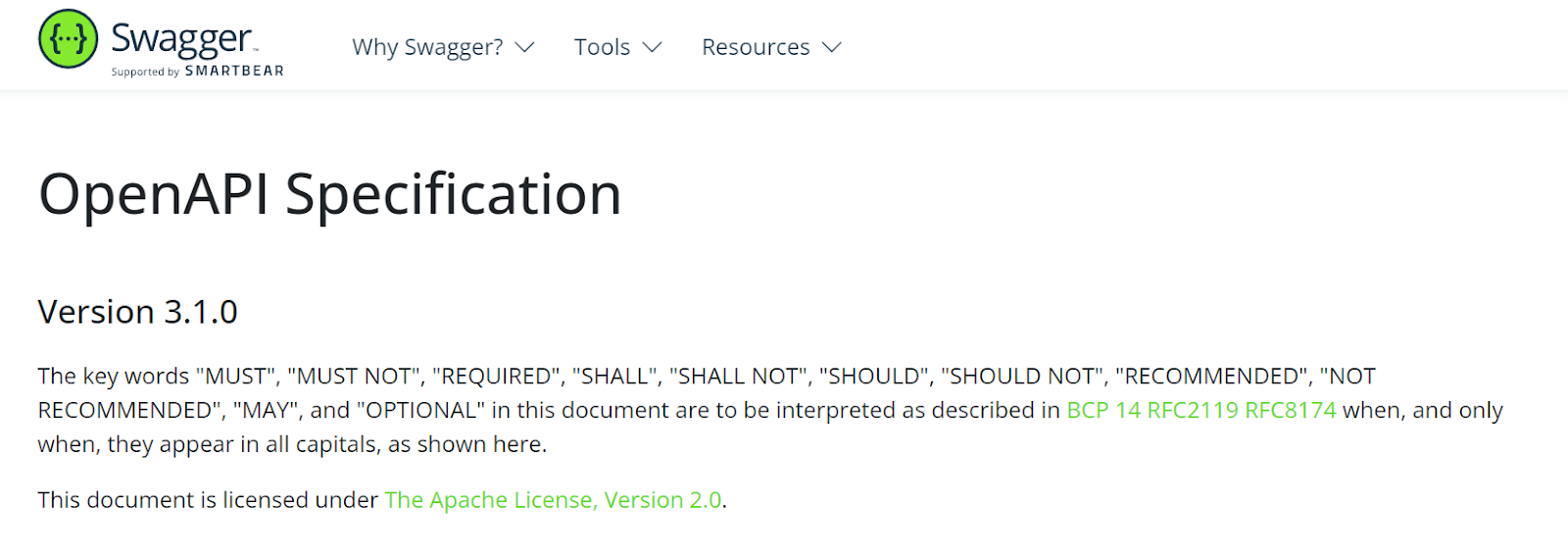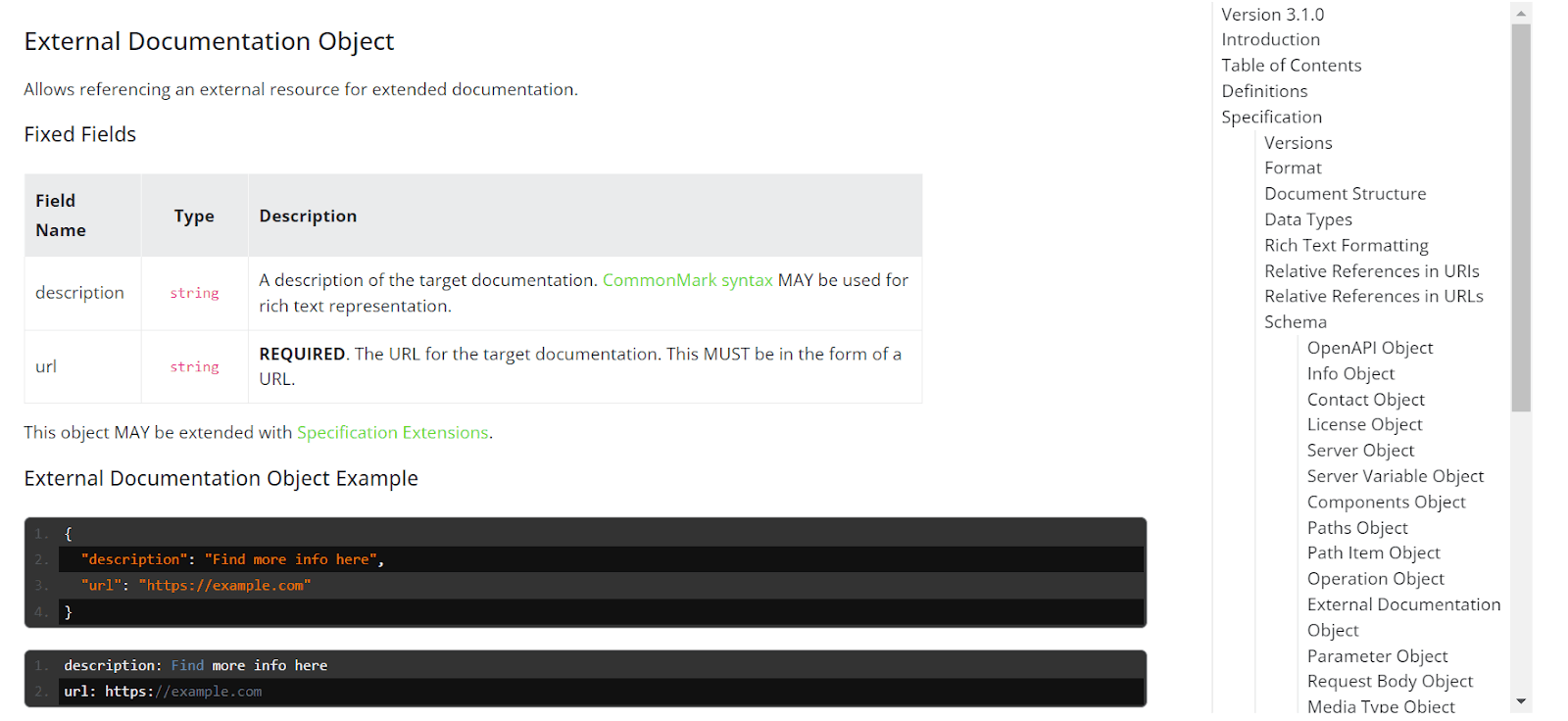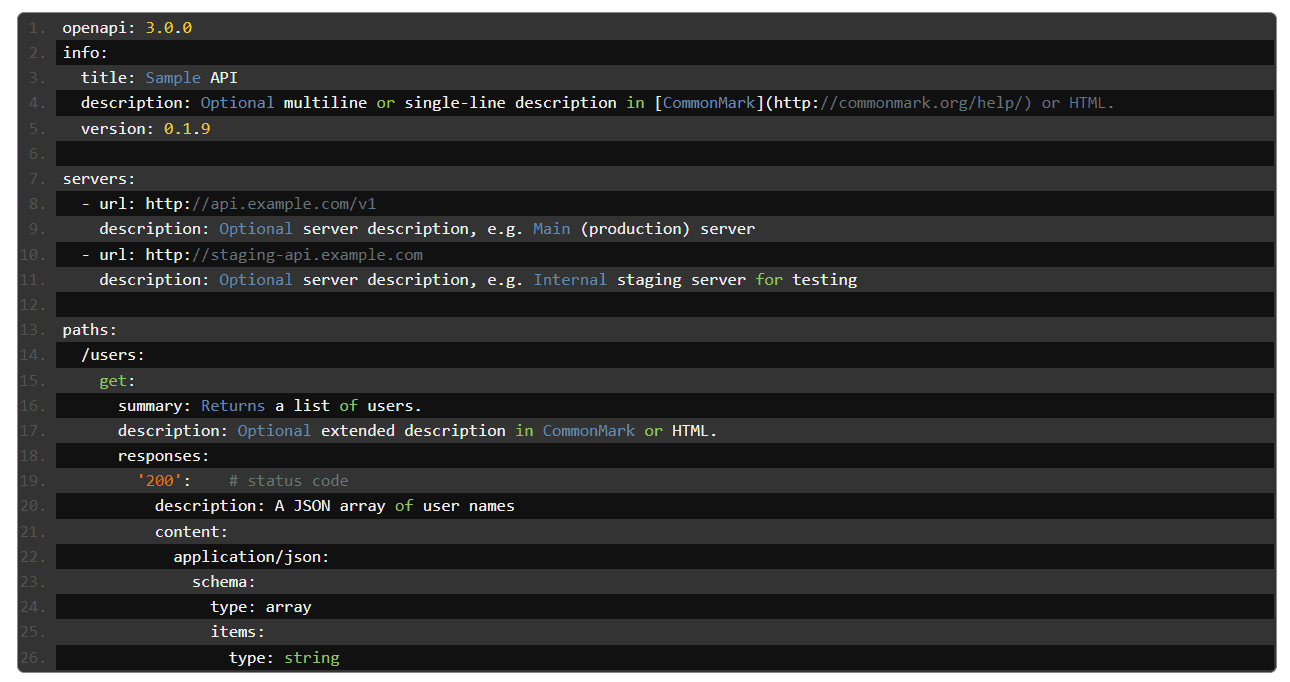How many times have you wanted to look up an API-related issue, only to be assailed with confusing terms that people use interchangeably?
For instance, API documentation, specification, and definition are terms whose meanings are often mixed up.
Considering that the lack of clarity could negatively impact the decision-making process for your business, it’s important to differentiate between the terms used in the industry.
That’s why we wrote this article—to clarify the difference between API documentation, specifications, and definitions.
By the end of this article, you’ll know your way around these terms and what each of the entities brings to your API. So, let’s dive in.
What Is API Documentation
We’ll start with the concept that regular developers or even end-users are the most likely to encounter: API documentation.
Essentially, API documentation is an umbrella term for all the pieces of information that users need to work with the API successfully. Here are 6 great tips for writing great API documentation!
If you’re now thinking about code snippets or lists of parameters—you’re right.
These are just some of the common elements of API docs. You can learn more in our detailed post about the topic.
For now, we’ll review the crucial components of API documentation using the following Twitter thread written by Wisdom Nwokocha, a documentation manager at Accumulate.

Source: Twitter
As you can see, elements such as an API overview, every call, every parameter, and error handling instructions help developers understand and implement the API.
Without comprehensive API documentation in place, developers are likely to switch to a better-documented solution. That's why you need to improve the API developer experience for better results!
So, if you’re aiming to increase the likelihood of your API’s adoption, it’s vital to provide the resources needed for using it.
If you’re curious to see what all this looks like in practice, we’ll now look at one of the best examples of API documentation that companies often use as a role model for the docs—the Stripe API.

Source: Stripe
Stripe’s API docs allow you to browse the table or contents on the left side of the screen or look up the topic you’re interested in using the search box.
Then, you’ll see a detailed description of terms, followed by code examples on the right.
It’s also worth mentioning that code samples are often the most used element of API documentation, so it’s wise to provide examples in multiple programming languages.

Source: Stripe
To sum up, we could compare API documentation to a user manual—both show users how to work with the product.
And like well-written manuals, API docs should be easily readable and full of helpful examples.
Now that we’ve demystified API documentation, let’s clear up what API specifications are.
What Is an API Specification
An API specification is a formal document that describes the elements that an API must contain, and it’s usually constructed before developers build the API.
Sounds a bit hazy?
Let’s put it a different way: an API specification is something like a blueprint for your API.
If you wanted to build a house, you’d first create a blueprint so that the builders know what to do. Likewise, API specifications are there to set the standards straight from the start.
So, while the API documentation describes the API, specifications prescribe what the API should be able to do.

Source: Archbee.com
An additional benefit of API specifications is that you can use them as a template for your future docs.
Seeing as specifications describe the API’s design and how it works, you could use them as a reference when writing user-centered docs.
Keep in mind, though, that most specs are too detailed and formal for regular users to read them, so you can’t use specifications as a substitute for documentation as a whole.
We’ll now look at the OpenAPI Specification by Swagger, a browser-based editor.

Source: Swagger
It starts with heavy legalese, which could be the first hint that specifications are not meant for basic customers.
And remember when we said that API documentation should be understandable and accessible to users? Well, API specifications aim for nothing of the sort.
For instance, the Swagger specification explains the crucial elements of the API using succinct definitions and brief excerpts of code.

Source: Swagger
Similarly, the specification lists all the functions, how they are called, and how they are interconnected.
Details like these wouldn’t be of much use to regular API users, but they provide knowledgeable specialists with an in-depth overview of the entire API.
In other words, API specifications are intended primarily for the API creators—end-users are not the primary audience here.
Still, both API documentation and specifications are written for humans, unlike API definitions, which are our next topic.
What Is an API Definition
API definitions are files that contain information about how the API works.
However, the difference between the definitions and other types of API documents that we’ve mentioned lies in the target audience: API definitions are written for machine consumption.
Take a look at the following example of an API definition to get the idea:

Source: Swagger
Not really a captivating read, unless you’re a computer.
Note that it’s precisely the machine-readable data that makes API definitions so beneficial.
When you properly write, format, and tag definitions, you can upload the file into appropriate tools and automatically generate API documentation for users. Here you can have a look at our top tools for documenting your APIs.
One of the greatest tools for doing so is Archbee, our product documentation platform.

Source: Archbee.com - API documentation tool
Archbee lets you upload the API definition file in standardized formats (JSON or YAML). It then creates API references, an indispensable element of API documentation. Here is a checklist for your API documentation that you should consider.
That way, you can use API definitions as a starting point for the rest of your API documentation.
Of course, documentation generated with API definitions will still need some touch-ups by human technical writers, but it’s certainly a more effective option than writing all docs from scratch.
API Documentation vs. Specification vs. Definition
Let’s recap how all these API-related concepts differ from each other.
The most apparent difference is the target audience: API documentation and specifications are written for humans, while definitions are created to be used by machines.
Next, they don’t serve the same purpose.
To put it briefly, API documentation educates the users about the API, the specifications provide technical details about how the API should work, and definitions have a similar role to specifications, but they’re geared towards machines.
As you can see, these three terms are not interchangeable, but they’re all related and play important roles in the overall success of the API.
Conclusion
Whether you’re interested in learning about APIs, building one, or finding the best tools to document your API, you’ll need to understand the terminology used for talking about the topic.
Hopefully, this overview has shed some light on the differences between API documentation, specifications, and definitions and equipped you with the knowledge to communicate about APIs clearly.
We wish you happy documenting!
FAQ
Frequently Asked Questions
API documentation is the human‑readable guide that teaches developers how to use your API. It explains what the API does, how to authenticate, how to make requests, and how to interpret responses and errors. Great docs pair clear explanations with practical examples so developers can integrate quickly and confidently.
Typical components include:
- Overview, concepts, and common use cases
- Quickstart and authentication/authorization setup
- Endpoint reference (methods, paths, parameters)
- Request/response schemas, examples, and status codes
- Error handling and troubleshooting guidance
- Code samples in multiple languages and SDKs
- Details on webhooks, pagination, rate limits, and versioning
- Tutorials, how‑to guides, and a changelog
Why it matters: well-written docs reduce support load, improve developer experience, and increase adoption.
